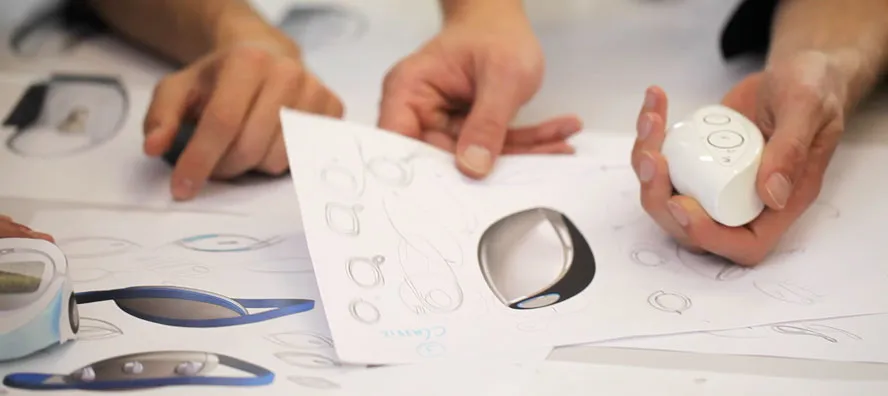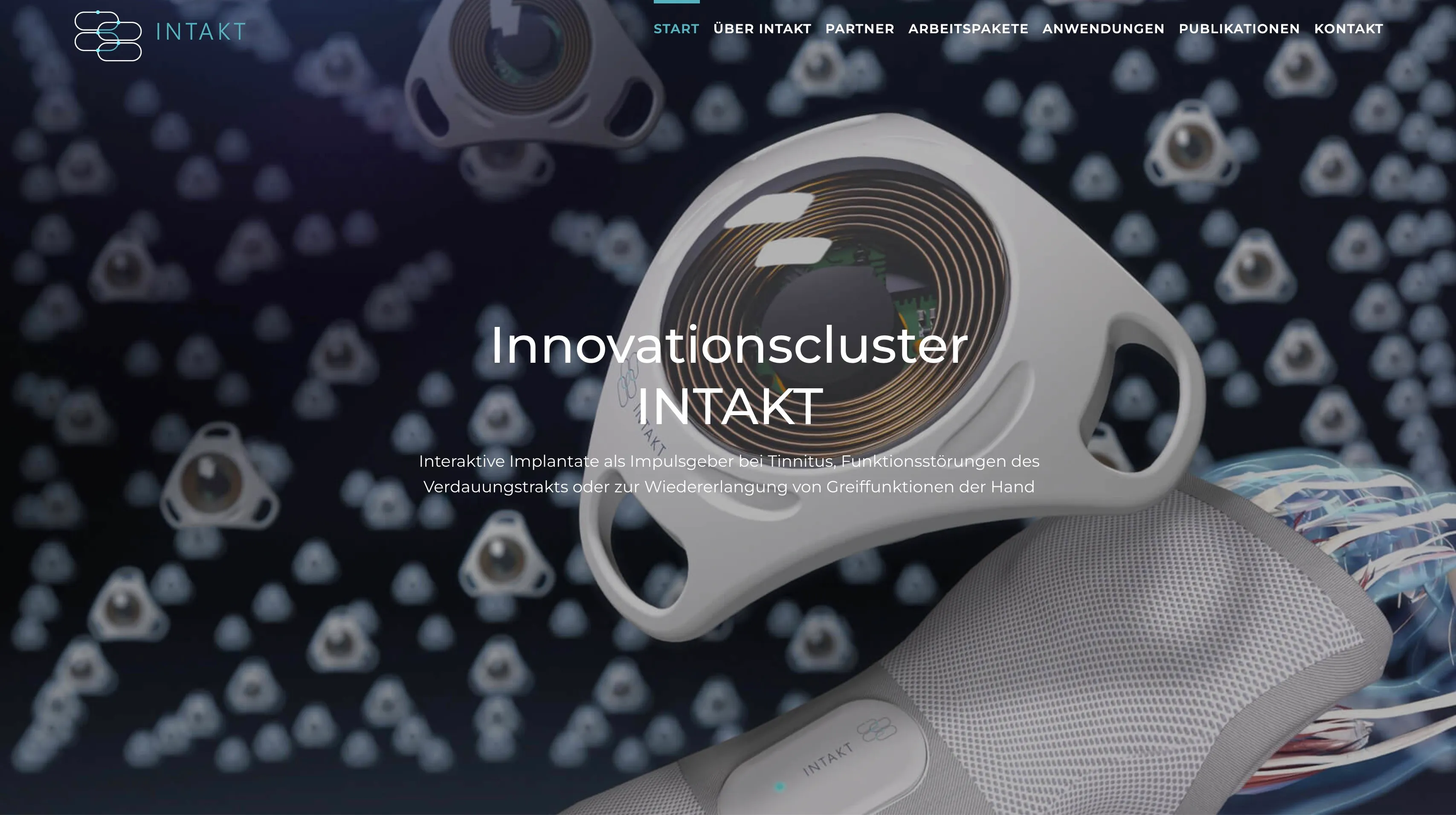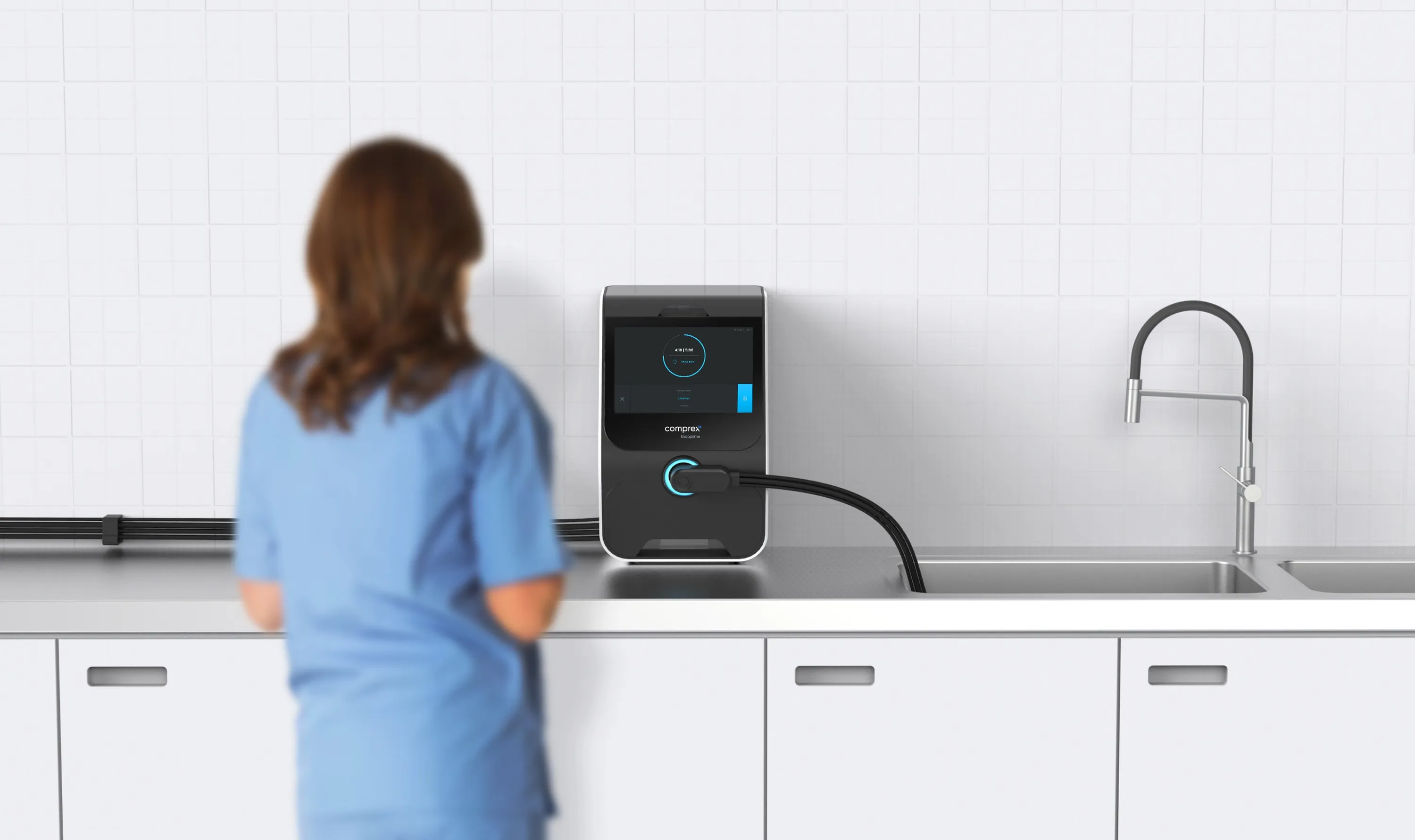Perspective
DIY Doctor - a strong trend at Medica 2018
... illuminated by our curious design interns
Today's young generation of designers is making a special effort to create meaningful, smart product solutions that are accessible to many people.
With this knowledge, we asked our design interns Aibolot Makenov (Kyrgyzstan), Jessica Castor and Timo Scheitinger (Germany) to take a fresh look at Medica 2018, the world's largest medical trade fair, which took place in Düsseldorf in November, as it does every year. They were asked to pick a topic that offered the most obvious potential for future development for their "young perspectives".

At the trade fair, they were particularly struck by a trend that is commonly described as the do-it-yourself doctor, or DIY doctor for short. This term refers to devices and technical applications that have been developed to make nursing care possible outside of hospitals and doctors' surgeries - away from the actual trained doctor or healthcare professional. These products are mainly used either by patients themselves or by other people without medical training to diagnose illnesses, provide treatment or "monitor" their state of health.
At Medica, we identified three types of devices that can be used for self-diagnosis and self-treatment. As you can see in the diagram, they are all connected to each other.
1. nursing care at home
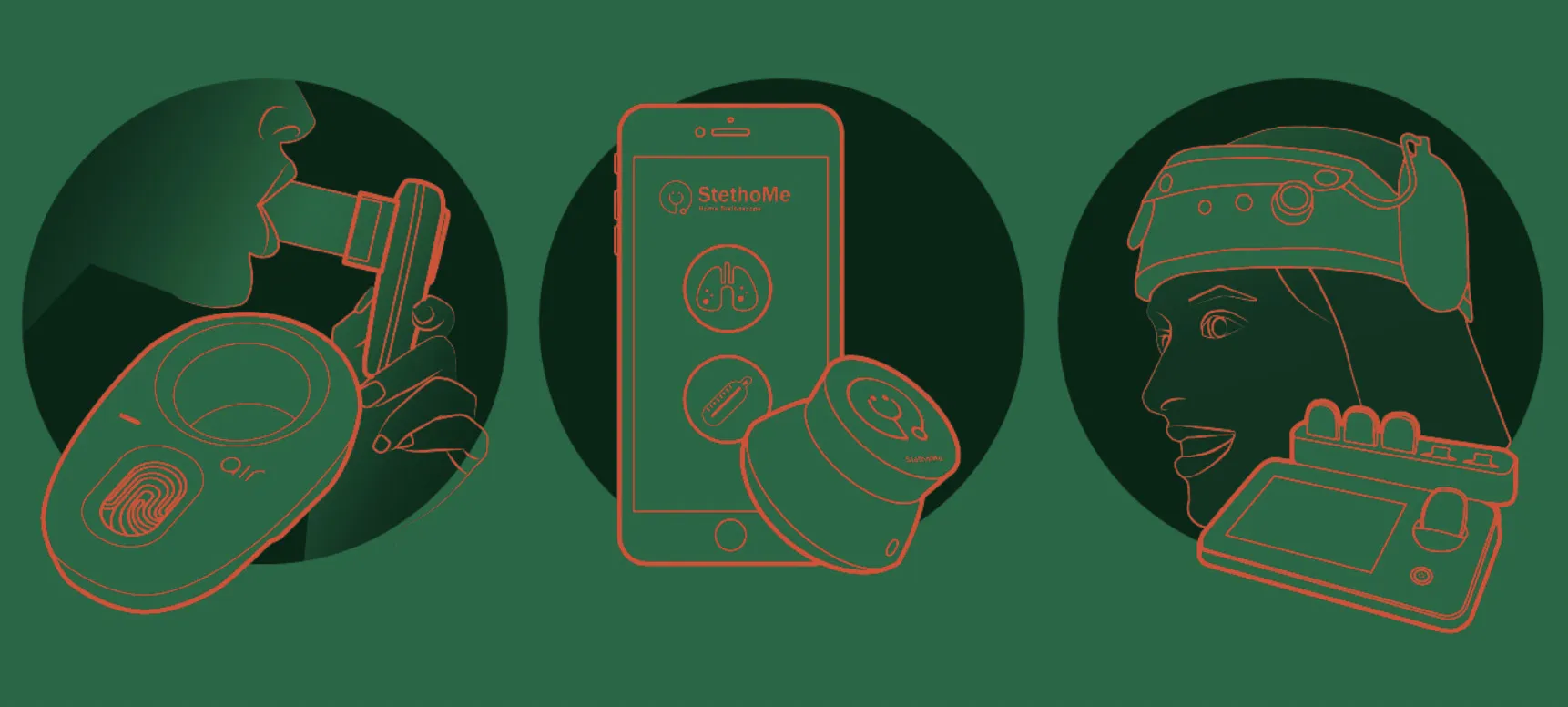
Modern technology with user-friendly interfaces is enabling more and more patients and their relatives to carry out basic medical treatments and diagnoses themselves and within their own four walls. Fewer visits to the doctor are necessary, but at the same time more and more health checks and treatments are possible. Many such products for treatment and diagnosis at home were presented at Medica 2018.
There was Ybrain, a start-up that specializes in neuroscience and aims to improve the quality of life of patients with brain diseases such as Alzheimer's. It all started with the smart headband MINDD STIM. A wireless brain stimulation system that enables treatment at home under the guidance of a doctor. The device records brain activity data, stores it and analyzes it on a separate device, the MINDD STIM module. Doctors have access to this data and the user-friendly interface facilitates communication between the patient and the treating doctor.
Continue with StethoMe. This is a wireless stethoscope for young parents to carry out standard health checks on their children. It can be used to monitor chronic lung diseases, for example. The certified medical device uses artificial intelligence to detect symptoms. The health status is displayed to parents and the doctor on a smartphone via an app, and the respective status can also be called up at any time in the course of the medical history.
Nuvoair, a Swedish company, sells the AIR NEXT spirometer. An easy-to-use tool for patients with chronic lung diseases who want to monitor their state of health.
We have presented these three products here as representatives of a large number of similar products. They all have a minimalist design with predominantly simple shapes and as few or simple operating elements as possible. The self-explanatory product language is complemented by desktop or smartphone interfaces with which private users are very familiar.
This trend in home healthcare is important for both the current and future healthcare system, as the amount of data on the patient's state of health makes it possible to determine symptoms more quickly and accurately. Patients with chronic diseases and elderly patients will benefit the most from the new DIY products.
2. telemedicine for personal use
Telemedicine has been touted as the trend of tomorrow for many years. Unfortunately, only a few applications have been able to establish themselves on the market so far.
A video and telecommunication device is normally used to enable professionals to share their knowledge with each other. In addition, they offer further opportunities for patients to consult a real doctor. From the user's point of view, this aspect makes the devices appear particularly trustworthy.
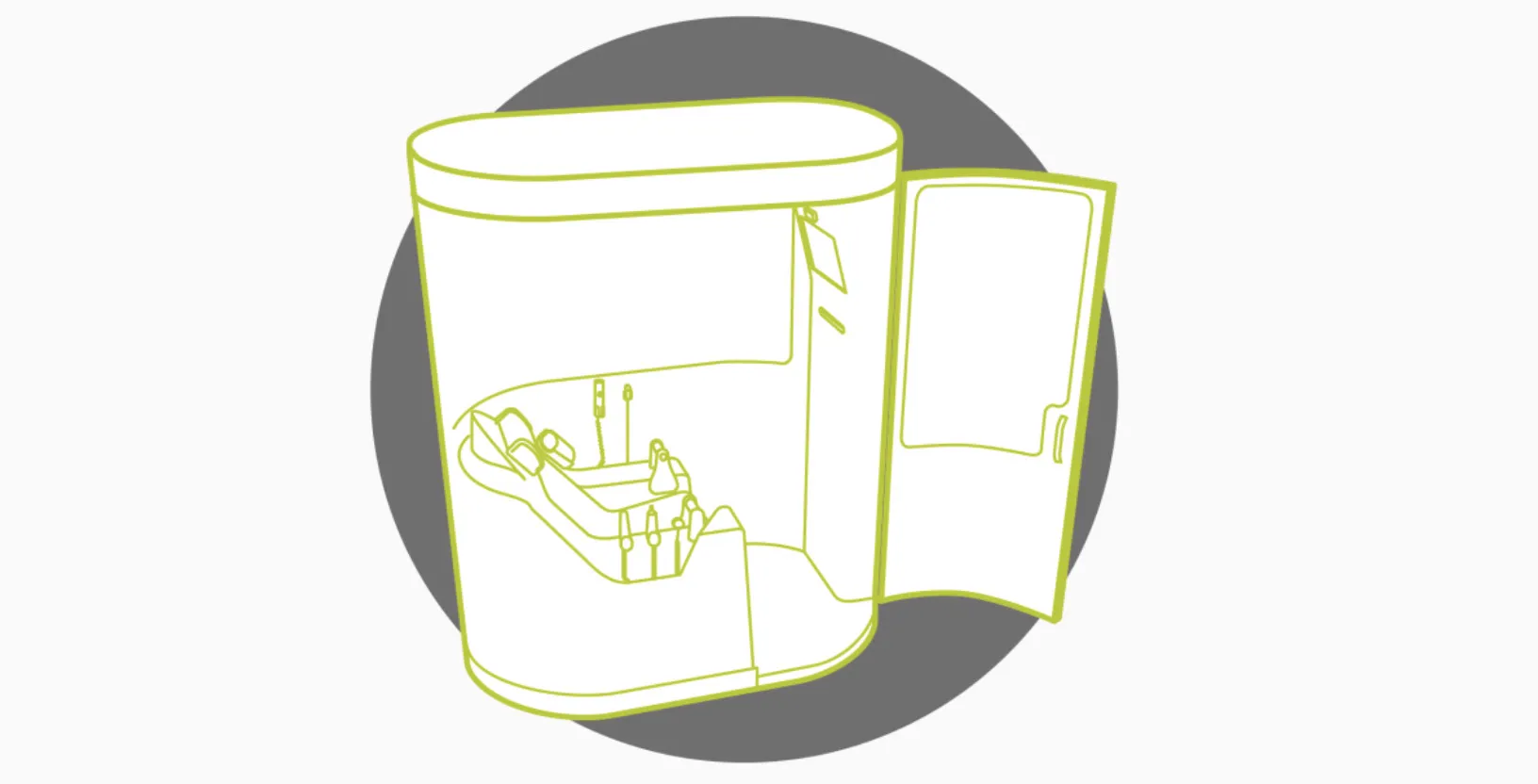
H4D from France (Health for Development), which was founded by the doctor Franck Baudino, is already successfully marketing its telecabin, the Consult Station. Baudino, who wanted to provide better access to more remote areas, took several years to test and develop his telehealth cabin. One of the biggest challenges was teaching patients how to use the instruments. The Consult Station can now treat more than 90 percent of the most common diseases.
H4D continues to grow, especially since a new business segment has opened up: Larger companies are installing a Consult Station in their office so that employees no longer have to spend so much time visiting a doctor. (See: "This telehealth cabin connects qualified doctors with patients all over the world" by Frances Marcellin for Vive la tech, December 13, 2017).
It is convenient for patients to use the cabin. But after each visit, the Consult Station and its equipment have to be cleaned by a cleaning team. The US company MEDEX Spot claims that its telehealth cabins are self-cleaning. Although their cabins are indeed able to detect impurities using cameras, is self-cleaning really as thorough as manual cleaning by appropriately trained staff - we are skeptical!
However, the idea of making appointments online and then seeing the doctor through a monitor is controversial. In our opinion, this product idea attempts to remedy a deficiency in our healthcare system for which other solutions should actually be found. Of course, these products underline the need for easier access to the healthcare system, but we think that this approach is more of a cry for help than a good solution, because as designers we always have the needs of the user in mind.
Performing various procedures on yourself while you are ill and feeling poorly is not an ideal solution from the user's point of view. This cabin is also not particularly practical for everyone: older people who need to see a doctor more often will certainly find it all the more difficult to carry out the procedures themselves. As the cubicles are quite cramped, there is also no room for a second person to assist. The feeling of simply being treated by a doctor is already widespread these days. We therefore expect the user experience of telehealth booths to be rather negative, at least in industrialized nations.
3. the smartphone becomes a medical device or instrument
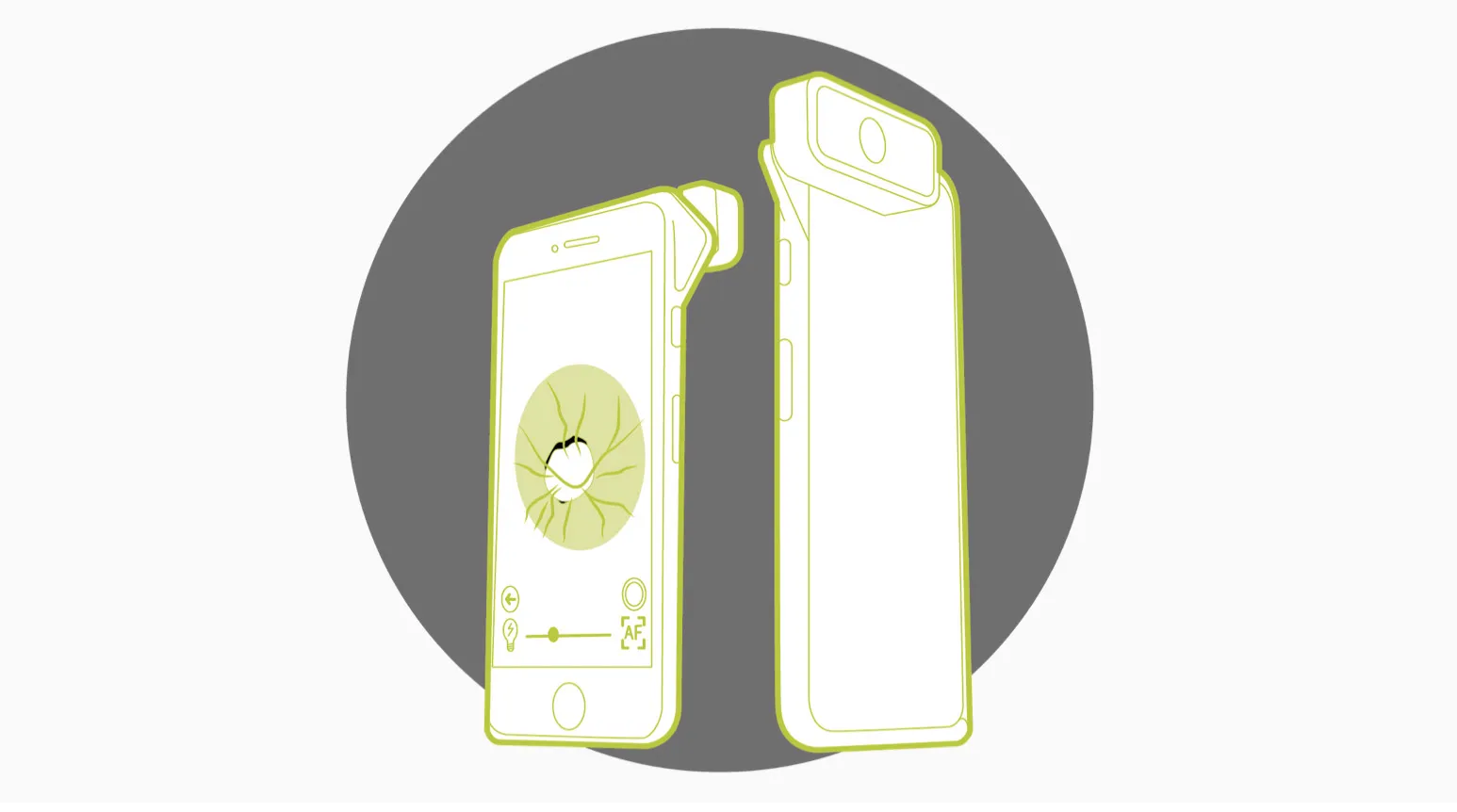
Another clear trend at Medica 2018 was the use of smartphones as medical devices. Thanks to their equipment with various sensors, powerful processors, a touchscreen as a variable user interface and internet access, smartphones are already suitable for carrying out medical analyses.
The simplest feat a smartphone is capable of in this regard with its already built-in technology is the recording of coughs, the evaluation of asthma symptoms, nasal symptoms etc. through an audio microphone. The recording of heart rate, blood pressure and blood oxygen levels can be done through a video stream, the detection of melanoma and the analysis of wounds through the camera. The phone's gyroscope can be used to measure posture and movement and is mainly used in preventive care, for example to combat obesity.
In addition to medical smartphone applications, the technology can be enhanced with external hardware. For example, theD-Eye camera, which is installed through a special smartphone case. This camera is additional hardware for the iPhone which, together with an app, transforms the phone into a mobile ophthalmoscope. With the D-Eye camera, the doctor can look at a patient's eye and detect conspicuous eye diseases. The images are saved for further examinations. The result is an easy-to-use mobile device that is also suitable for bedridden patients. A whole bundle of almost professional possibilities - at an unbeatable price.
Turning the smartphone into a medical device opens up almost unlimited possibilities for affordable medical devices. The high cost of medical devices is a common problem in healthcare around the world, but especially for underdeveloped countries. The smartphone is at the cutting edge of technology, widely available and should provide better access to healthcare for many parts of the world's population. We think this idea will catch on all over the world.

Prospects
Insights into the DIY doctor trend at Medica 2018 have shown that the future of healthcare will become much more user-friendly for patients, but also for doctors. Nowadays, care facilities are overloaded. For economic reasons, patient treatment must be particularly efficient, often at the expense of the comfort and time of both patients and doctors. This results in errors which, together with an incorrect diagnosis and psychological factors, can be even more detrimental to the patient's health.
Enabling patients to carry out health examinations and treatments themselves not only relieves the burden on care facilities and employees, but also saves a lot of unproductive waiting time. Treatment at home is convenient and personalized, even if there are of course risks involved in taking your treatment into your own hands. Confidence-inspiring and user-friendly products are therefore in great demand.
The future challenge for us designers will be to combine convenience with the necessary safety. Creating a satisfying user experience is important, as medical products will increasingly be purchased by end users in the future and will therefore also be subject to the laws of the mass market.
Text: Jessica Castor, Aibolot Makenov, Timo Scheitinger
Illustrations: Jessica Castor
Many thanks to the three of you for your trend spotting at Medica. The examples described are proof that medicine and lifestyle are converging and, in the best case scenario, forming a symbiosis.
Markus Wild
If you would like to delve further into current trend topics from the medical world, I recommend our 2018 Medical Design Trend Update.
Frequently asked questions

